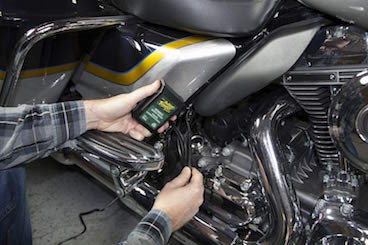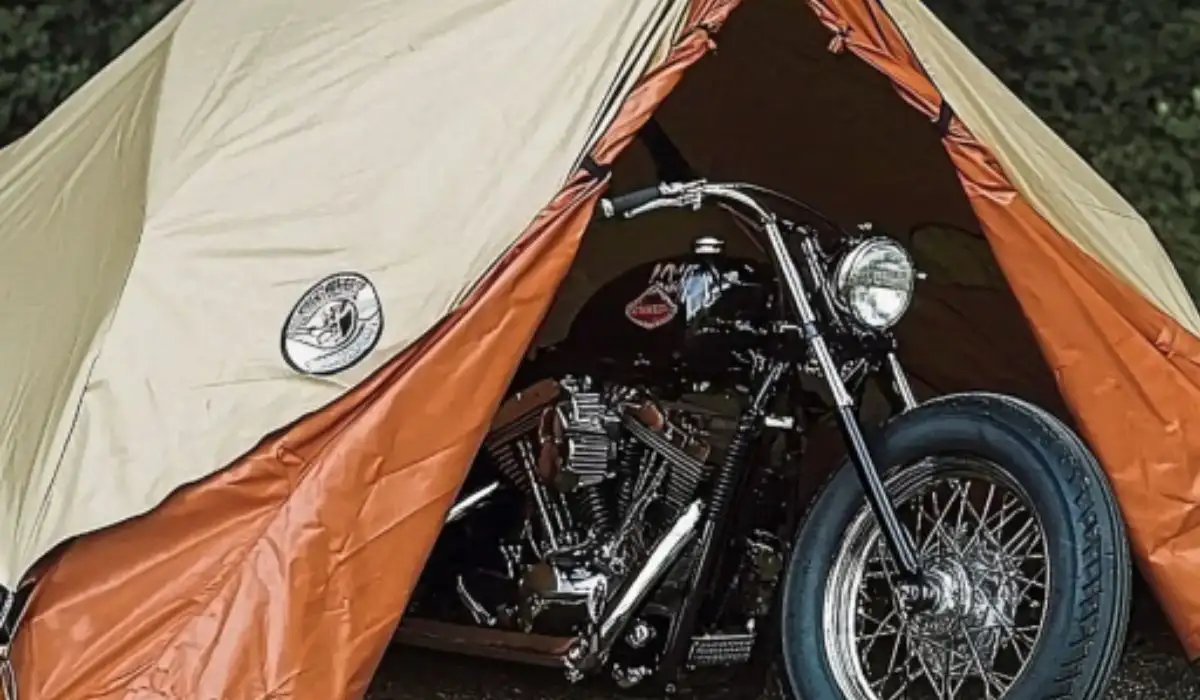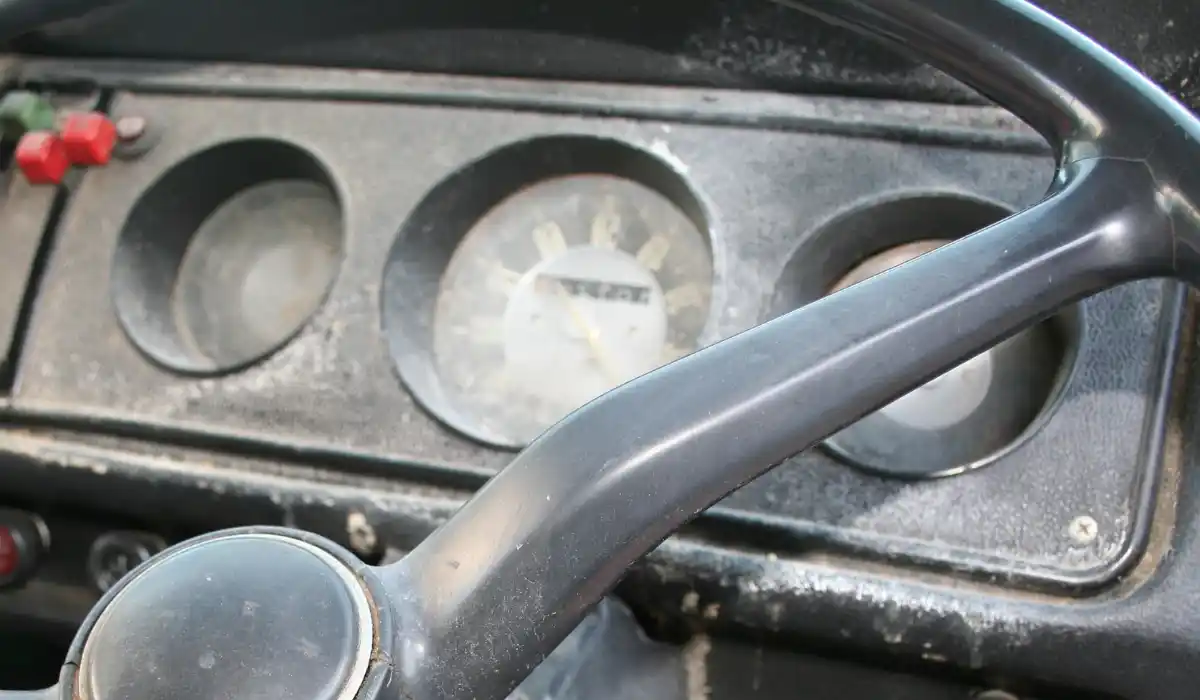Using a motorcycle battery charger will keep the battery fresh and charged. They’re great whether you’re not riding your bike over the winter or you’re leaving it in storage.
There’s nothing worse then getting to your motorcycle, popping in the key, hitting the ignition switch – and nothing happens. While this could be caused from a number of things, the most common issue is a dead battery.
You could use a motorcycle jump starter to get the battery going again. Unfortunately, this isn’t the ideal solution for when this happens and you’re still at home.
This is where battery chargers come into play. Essentially, a battery charger is a charger designed to keep your battery powered when it’s not being used.
This practical motorcycle maintenance tool uses a microprocessor technology that helps your battery keep running when you’re not using your motorcycle. They’re inexpensive, easy to use, and great to have if you’re not riding regularly.
In this post let’s take a look at the basics of the battery charger. We’ll also getting to how to use a motorcycle battery charger to prolong the life of your motorcycle battery.
Jump Ahead To:
Motorcycle Battery Charger 101
It’s better to think of a battery charger as a maintenance charger, rather than a device used to fully charge a dead battery.
Chargers are designed to provide a supply of continuous voltage to a battery terminal. This keeps batteries charged and prevents them from dying or losing charge when they’re not being used.
Most Chargers also come with an advanced processor inside that gives them a few other capabilities. This includes the ability to charge defective batteries and to prevent sparks when connecting the terminals. They also come with indications lights that give you an accurate reading of the battery current power levels.
The problem with chargers, specifically trickle chargers, is that they’re not as advanced. It’s possible to damage your battery by leaving it connected to a charger for too long. Simply put, the technology isn’t in place for dedicated chargers to be effective for maintaining your motorcycle battery.
How to Use a Battery Charger For Your Motorcycle

Using a battery charger is simple and will extend the lifespan of your motorcycle battery when it’s not being used.
Whether you’re mechanically inclined or not, it’s easy to connect the charger with your battery. Follow this step-by-step guide and you’ll get everything connected in no time:
- Start by removing the seat on your motorcycle so you can access the battery. For most bikes all that’s required are Allen keys and a screwdriver. Refer to your owner’s manual if you’re not sure how to remove the seat or where the battery is located.
- With the seat removed and the battery accessible disconnect the leads. Start by disconnecting the negative lead (typically red) followed by the positive lead. For this you’ll need a screwdriver or wrench set depending on your bike.
- Decide whether you’re leaving the battery in the bike or removing it. We recommend removing it and starting the battery along with the charger somewhere accessible.
- When connecting the charger to the battery it’s a good idea to connect the positive terminal first. This will help to avoid grounding the battery. After connecting the positive terminal, connect the negative terminal. Check the terminal connections and verify everything is properly attached/screwed on.
- Plug in the battery charger. If everything is hooked up correctly the charger will light up. Typically there are three different lights indicating the charging status. A green light means the battery is in trickle mode. An orange light means the battery is being charged that’s it. A yellow light means the battery is being charged and still has power. Some chargers come with a screen providing you with a more accurate reading.
- If no lights appear then you likely didn’t connect to the battery to the charger properly. Check the connections and try again. Another reason could be that the charger is not compatible with your battery.
Tips for Using a Motorcycle Battery Charger
At this point you should have everything hooked up. The battery will either be charging or maintaining its charge. This way the battery is ready for you to use the next time you want to ride your motorcycle.
To help you avoid any issues, here are some helpful tips for using your battery charger:
Always remove the negative terminal from the battery first. You could short the battery and permanently damage it by removing the positive side first.
Keep all the battery parts together. It’s not possible to buy replacement parts for a motorcycle battery. The entire battery will have to be replaced if you lose any of the parts.
Use your battery charger during the winter or long periods of not riding. Your motorcycle battery will slowly lose its charge when it’s not being used. It’s best to hook it up to a charger during the winter where your bike will be sitting for months. Consider removing the battery and using a charger if you’re planning on putting your motorcycle in storage as well.
Buy a quality charger. Any battery charger you purchase should come with an instruction manual, visual display, and simple controls. Without these components the charger might be difficult to use and not worth investing in. Always read reviews online before making a motorcycle-related purchase.
The Best Time to use a Battery Charger

The main advantage of using a battery charger is that it won’t overcharge your motorcycle battery. This makes them ideal for keeping your motorbike battery charged when it’s in storage or not being used during the winter.
Leaving your battery connected to a battery charger is never a good idea. This will overcharge the battery and reduce its lifespan.
On the other hand, leaving it connected to a charger is the ideal solution for longer periods of time when you won’t be riding your motorcycle. That’s because the charger will stop charging once the battery is full. This will maintain its charge for the next time you want to use it.
Even after spending months not being used, your battery will be ready to go as long as it’s hooked up to a charger.



